
 When I was stationed at the Allstedt garrison, I heard an amusing story about the capture
of a crew of the British Military Liaison Mission near the airfield. It turned out that the mission's main means of capture
and detention were an oak tree that grew peacefully in the forest and an obsolete ZIS truck -
heir to the famous Studebaker. I personally had the opportunity to see the oak tree and the vehicle
that, in 1982 still moved under its own power. In truth, everything that happens in life - and what we ourselves do
in life - is a fairy tale.
When I was stationed at the Allstedt garrison, I heard an amusing story about the capture
of a crew of the British Military Liaison Mission near the airfield. It turned out that the mission's main means of capture
and detention were an oak tree that grew peacefully in the forest and an obsolete ZIS truck -
heir to the famous Studebaker. I personally had the opportunity to see the oak tree and the vehicle
that, in 1982 still moved under its own power. In truth, everything that happens in life - and what we ourselves do
in life - is a fairy tale.
What in this story is true and what is a fairy tale is up to you to judge...
Victor Valvic, 294.ORAP.
Наши русскоязычные читатели могут прочитать подлинник рассказа Виктора Валвика ЗДЕСЬ
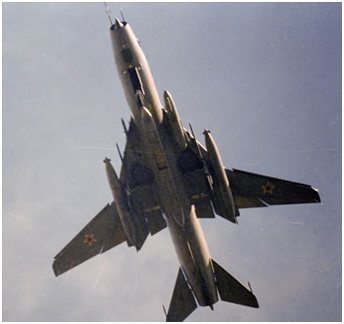
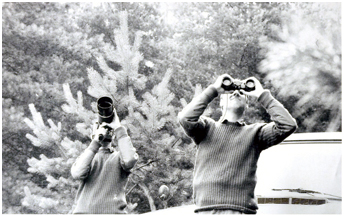 It now is no longer a secret that a reconnaissance aviation regiment [the 294.ORAP] was based at Allstedt back in those far gone Soviet days.
Various intelligence services of countries on the other side of the barricade "friendly" to us naturally were very interested in the reconnaissance activities of the aviators.
Employment of the military liaison missions - formed in accordance with the 1945 Potsdam agreement (1) -
was the most favorable means of conducting reconnaissance activities for the NATO countries.
Meanwhile, none of the GDR authorities had the right to detain the representatives of these missions (regardless of the circumstances). Only the authorities of the military administration
of the Group of Soviet Forces [in Germany] could detain them in the event of a violation of the rules for these missions.
These missions traveled throughout the GDR via routes authorized to them where even the GSFG administration had no right to detain them. If they left these established routes
(2), the Soviet military
could detain a mission only if they were able to do so and prepare a statement [Akt] describing violations (3).
Well, if they couldn't be detained, consequently no violations occurred.
The same could occur for those in NATO in the FRG, where the Soviet military liaison missions were concerned [in the former British, French and US sectors of occupation].
It should be stated that use of weapons was ruled out in principle (4)
and violation of extraterritoriality as well. Bluntly put, one couldn't crawl into the vehicle and yank the passengers out, either. Diplomatic status! But, to give them their due, after every
detention a statement about violations was prepared, diplomats were summoned, protests lodged, in short diplomatic tension rose. Therefore, the military liaison missions were not very much
interested in "ending up detained."
Thus, even up to the 1980s an old historic atavism and anachronism from the close friendship of the different countries making up the anti-Hitler coalition were retained.
I do not know how it was for our guys in the FRG, but in the GDR our "friends" put the missions to full use for reconnaissance without fearing special punishment
(5), but striving not "to get involved" with Soviet counterintelligence authorities.
It now is no longer a secret that a reconnaissance aviation regiment [the 294.ORAP] was based at Allstedt back in those far gone Soviet days.
Various intelligence services of countries on the other side of the barricade "friendly" to us naturally were very interested in the reconnaissance activities of the aviators.
Employment of the military liaison missions - formed in accordance with the 1945 Potsdam agreement (1) -
was the most favorable means of conducting reconnaissance activities for the NATO countries.
Meanwhile, none of the GDR authorities had the right to detain the representatives of these missions (regardless of the circumstances). Only the authorities of the military administration
of the Group of Soviet Forces [in Germany] could detain them in the event of a violation of the rules for these missions.
These missions traveled throughout the GDR via routes authorized to them where even the GSFG administration had no right to detain them. If they left these established routes
(2), the Soviet military
could detain a mission only if they were able to do so and prepare a statement [Akt] describing violations (3).
Well, if they couldn't be detained, consequently no violations occurred.
The same could occur for those in NATO in the FRG, where the Soviet military liaison missions were concerned [in the former British, French and US sectors of occupation].
It should be stated that use of weapons was ruled out in principle (4)
and violation of extraterritoriality as well. Bluntly put, one couldn't crawl into the vehicle and yank the passengers out, either. Diplomatic status! But, to give them their due, after every
detention a statement about violations was prepared, diplomats were summoned, protests lodged, in short diplomatic tension rose. Therefore, the military liaison missions were not very much
interested in "ending up detained."
Thus, even up to the 1980s an old historic atavism and anachronism from the close friendship of the different countries making up the anti-Hitler coalition were retained.
I do not know how it was for our guys in the FRG, but in the GDR our "friends" put the missions to full use for reconnaissance without fearing special punishment
(5), but striving not "to get involved" with Soviet counterintelligence authorities.
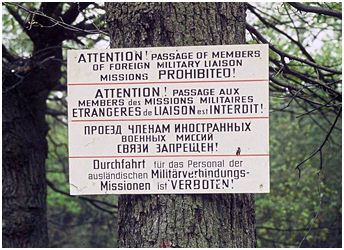
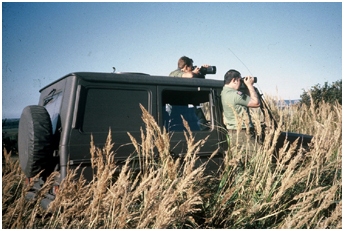 Not all that far away, say about 30 kilometers from Allstedt, there was a road that the foreign military missions could use.
On flying days, the "Jeeps" of the foreign military missions trundled back and forth along this road. These were special "Jeeps" that looked a lot like ours, our Soviet vehicle, but were three
times more powerful and they even had tires that would take them through any swamp and you couldn't catch them in a "Volga." And there was a sea of all kinds of reconnaissance equipment inside
the "Jeep": cameras, radio equipment (6), all kinds of reconnaissance gems.
But, 30 kilometers from the landing glidepath is too far and photo quality was awful. In a word, the quality just isn't there. And, if you could
get a bit closer, closer to this glidepath, then you could perhaps "suck up" something or other. But, getting closer was prohibited, and there were signs in English, French, Russian and German
on every turnoff along the route, signs saying: "Passage of foreign military liaison missions prohibited." But, passage is prohibited, and this is philology.
Not all that far away, say about 30 kilometers from Allstedt, there was a road that the foreign military missions could use.
On flying days, the "Jeeps" of the foreign military missions trundled back and forth along this road. These were special "Jeeps" that looked a lot like ours, our Soviet vehicle, but were three
times more powerful and they even had tires that would take them through any swamp and you couldn't catch them in a "Volga." And there was a sea of all kinds of reconnaissance equipment inside
the "Jeep": cameras, radio equipment (6), all kinds of reconnaissance gems.
But, 30 kilometers from the landing glidepath is too far and photo quality was awful. In a word, the quality just isn't there. And, if you could
get a bit closer, closer to this glidepath, then you could perhaps "suck up" something or other. But, getting closer was prohibited, and there were signs in English, French, Russian and German
on every turnoff along the route, signs saying: "Passage of foreign military liaison missions prohibited." But, passage is prohibited, and this is philology.
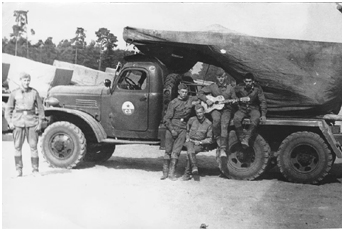 There are no mine fields, no barbed wire, no barriers. Simply put, prohibited and that is it.
The bravest "missionaries" easily turned off towards Allstedt, drove in as close as possible, quickly did their dirty business and very quickly made their way back to the safe road.
It must be said that they were very often successful. While the Soviet side is regaining consciousness, until a detention group is found, until transportation for this group is located, until
fuel is found for these vehicles. To put it succinctly, several times the rear end of the mission vehicle was seen departing the prohibited zone all the same. However, it was impossible in
our domestic military transport to catch up with that tail. And so, one summer day a MIRACLE occurred, something that can happen only under the conditions of developing socialism.
While flying was underway, the British military liaison mission [BRIXMIS] comprising three men radically changed the route of passage, skipped along towards Allstedt, drove into the woods near the glidepath,
within some 3 kilometers by the way. Insolence, impudence of the highest order! A drum beat here, as usual.
In short, each one is occupied with his own business: we are involved in reconnaissance and so are the British, but with opposite aims.
The Brits were set up impudently, but with consideration for unexpected circumstances. They had turned their "reconnaissance Jeep" in the direction of a field trail in the event an extreme
departure was required. But they did not consider one circumstance: there was a pretty large oak tree about a meter in diameter some 2 meters behind the vehicle. According to the law of unique
coincidences, at that moment Sasha V., the deputy for political affairs, in a ZIS that was on the list to be junked with 10 liters of fuel and 2 tons of coal attempted to get to the airfield.
The vehicle was barely in gear and it was moving, but the transmission froze, it braked, just about everything was malfunctioning, and it quit at a time when it was most undesirable. The
driver was a match for the vehicle and was not entirely of Slavic nationality.
There are no mine fields, no barbed wire, no barriers. Simply put, prohibited and that is it.
The bravest "missionaries" easily turned off towards Allstedt, drove in as close as possible, quickly did their dirty business and very quickly made their way back to the safe road.
It must be said that they were very often successful. While the Soviet side is regaining consciousness, until a detention group is found, until transportation for this group is located, until
fuel is found for these vehicles. To put it succinctly, several times the rear end of the mission vehicle was seen departing the prohibited zone all the same. However, it was impossible in
our domestic military transport to catch up with that tail. And so, one summer day a MIRACLE occurred, something that can happen only under the conditions of developing socialism.
While flying was underway, the British military liaison mission [BRIXMIS] comprising three men radically changed the route of passage, skipped along towards Allstedt, drove into the woods near the glidepath,
within some 3 kilometers by the way. Insolence, impudence of the highest order! A drum beat here, as usual.
In short, each one is occupied with his own business: we are involved in reconnaissance and so are the British, but with opposite aims.
The Brits were set up impudently, but with consideration for unexpected circumstances. They had turned their "reconnaissance Jeep" in the direction of a field trail in the event an extreme
departure was required. But they did not consider one circumstance: there was a pretty large oak tree about a meter in diameter some 2 meters behind the vehicle. According to the law of unique
coincidences, at that moment Sasha V., the deputy for political affairs, in a ZIS that was on the list to be junked with 10 liters of fuel and 2 tons of coal attempted to get to the airfield.
The vehicle was barely in gear and it was moving, but the transmission froze, it braked, just about everything was malfunctioning, and it quit at a time when it was most undesirable. The
driver was a match for the vehicle and was not entirely of Slavic nationality.
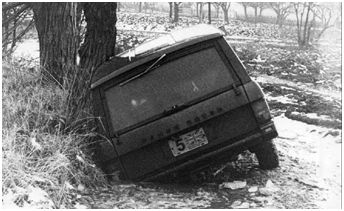 Moving along the field trail, purely coincidently, the political officer saw the mission there by the oak tree. With a bit of fright, or recognition, Sashen'ka hollered at the driver: "Spies!"
The driver, who happened to know that word and also may have seen a poster saying "Death to Spies!" quite probably while studying the Russian language took the command literally.
Leaning over sharply, the ZIS at full speed "hammered" the "intelligence" vehicle. The fact that the ZIS was barely moving and the combat collision was slight saved the spies from a certain fate.
This was the final and deadly movement of the glorious vehicle.
As a result of the "ramming," the rear bumper of the "super Jeep" involuntarily struck the oak. And, the Soviet ZIS in this fatal clash became entangled in the front bumper. The end! The
"cauldron" was closed; the route of escape for the mission was blocked. Sashen'ka immediately dispatched the driver to the garrison to call up the special group [whose task was to capture the
members of the military liaison missions]. Sashen'ka himself remained to guard the unlucky British missionaries.
The Brits, having recovered from being shaken up, first off informed Sashen'ka that they are diplomats, albeit military, and that he was not to enter their vehicle, i. e. British territory!
Sashen'ka in response also announced that entry into the territory of the ZIS is impermissible. That was the extent of it. Tense waiting began.
The Brits, besides conducting themselves very correctly and in a friendly way, also knew the Russian language very well. They immediately admitted that they "found themselves" in a level spot
and expressed very great chagrin about the unpleasantness that they would encounter from their leadership.
The tiring waiting for the capture group and for the representatives of the Soviet military administration [the local Komendatura] continued.
Since there was nothing much else to do, they set about discussing such things as the weather, restructuring, and even talked a bit about politics.
Well, Sashen'ka wanted to pull out the fingernails of these skunks!
Moving along the field trail, purely coincidently, the political officer saw the mission there by the oak tree. With a bit of fright, or recognition, Sashen'ka hollered at the driver: "Spies!"
The driver, who happened to know that word and also may have seen a poster saying "Death to Spies!" quite probably while studying the Russian language took the command literally.
Leaning over sharply, the ZIS at full speed "hammered" the "intelligence" vehicle. The fact that the ZIS was barely moving and the combat collision was slight saved the spies from a certain fate.
This was the final and deadly movement of the glorious vehicle.
As a result of the "ramming," the rear bumper of the "super Jeep" involuntarily struck the oak. And, the Soviet ZIS in this fatal clash became entangled in the front bumper. The end! The
"cauldron" was closed; the route of escape for the mission was blocked. Sashen'ka immediately dispatched the driver to the garrison to call up the special group [whose task was to capture the
members of the military liaison missions]. Sashen'ka himself remained to guard the unlucky British missionaries.
The Brits, having recovered from being shaken up, first off informed Sashen'ka that they are diplomats, albeit military, and that he was not to enter their vehicle, i. e. British territory!
Sashen'ka in response also announced that entry into the territory of the ZIS is impermissible. That was the extent of it. Tense waiting began.
The Brits, besides conducting themselves very correctly and in a friendly way, also knew the Russian language very well. They immediately admitted that they "found themselves" in a level spot
and expressed very great chagrin about the unpleasantness that they would encounter from their leadership.
The tiring waiting for the capture group and for the representatives of the Soviet military administration [the local Komendatura] continued.
Since there was nothing much else to do, they set about discussing such things as the weather, restructuring, and even talked a bit about politics.
Well, Sashen'ka wanted to pull out the fingernails of these skunks!
 What do they think they are doing, these Brits! In detail he elaborated on the events in Belfast, Northern Ireland,
pointed out that they were the oppressors of the freedom-loving Irish people and so on and so forth and such. From what they heard, the Brits rapidly recovered, were stunned, and went bananas!
They were absolutely amazed at the ardor of the Soviet captain. And Sashen'ka broke loose as if throwing off chains. He very quickly tried to make them understand. In a word, the youngest British
captain ended the discussion.
In that clear manner for which the Brits are known, the captain announced: "Listen, Mister Captain! You know, I have lived in Britain for 30 years already and am unable to sort out just what
is going on in Ulster. Let's not get into politics. It is better if we discuss women!"
Well, Sashen'ka was not going to let that pass! It is a fact that he knew so many different jokes and latrine humor about women that the Brits couldn't believe it. I repeat, the Brits knew
Russian very well, which facilitated many procedural questions.
What do they think they are doing, these Brits! In detail he elaborated on the events in Belfast, Northern Ireland,
pointed out that they were the oppressors of the freedom-loving Irish people and so on and so forth and such. From what they heard, the Brits rapidly recovered, were stunned, and went bananas!
They were absolutely amazed at the ardor of the Soviet captain. And Sashen'ka broke loose as if throwing off chains. He very quickly tried to make them understand. In a word, the youngest British
captain ended the discussion.
In that clear manner for which the Brits are known, the captain announced: "Listen, Mister Captain! You know, I have lived in Britain for 30 years already and am unable to sort out just what
is going on in Ulster. Let's not get into politics. It is better if we discuss women!"
Well, Sashen'ka was not going to let that pass! It is a fact that he knew so many different jokes and latrine humor about women that the Brits couldn't believe it. I repeat, the Brits knew
Russian very well, which facilitated many procedural questions.
Upon arrival at the garrison, the "not entirely of Slavic nationality" ZIS driver who didn't know Russian all that well attempted to explain to the command element about detention of violators.
When he arrived at the motor pool, he tried to explain things to the motor transport company commander. The word combination "oak-spy" led the commander to believe that the driver had run into
an oak tree. Well, that too is understandable, the fact that you would have that kind of driver in that kind of vehicle. "Well then, fellow. We will pull your vehicle off the oak tree tomorrow,"
the commander gestured and set about making important decisions regarding flying operations.
Flying ceased at the end of the work day, everyone was occupied with briefings and folks remembered that the coal in the airfield company special shop had run out. They also remembered the driver
and his cargo. But, for some reason, no one thought about the political deputy.
Detailed and pertinent elucidations with the driver about the valuable cargo began. Once again the driver's explanations about the "oak-spy" led to thoughts about an accident involving an oak tree.
With three sacks and a shovel, a delegation comprising a warrant officer, two troops and a driver was dispatched. Something like 100 kilograms of coal had to be brought to the motor pool to
maintain the technological process.
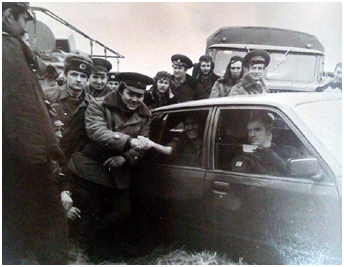 At this same time, the spies along with the political deputy near the oak exchanged more latrine humor. The latter's stock of off-color tales was inexhaustible. The captain, the most quick-witted,
copied down this history in his fat notebook. The woods were replete with howls of laughter. They slowly began to forget about the essence of the situation, about who had detained whom, who was
guarding whom, and what was happening overall.
True, the British major in a cloud of indignation expressed his contempt for the Americans because of their lack of control in elimination of Lend-Lease wastes, eloquently pointing at the dead ZIS
(7).
Several anecdotes on this subject followed, transitioning true enough to the feminine theme.
Early dusk arrived. Without waiting for the capture group, the Brits brought out all kinds of canned goods, loaves of bread, sausage, cheese and even eggs, plus coffee in a thermos. To put it
succinctly, they covered the glen in the truest sense of the word. Like cultured people, the Brits also invited the main detainer. The political deputy, also like a cultured person, did not refuse.
They prepared themselves, ate, smoked and exchanged off-color stories. And that captain, the Brit, continues to write and write.
At that moment, silently out of the woods, without extra noise and shouts, appeared four individuals with three bags and a shovel.
The Brits rapidly compared the three bags to their numbers and attempted immediately to draw some sort of conclusions (intelligence types, after all). Based on their ashen faces, somehow one
recalled the lyrics of our, Soviet, song: "And the Motherland knows not where the graves of the heroes are."
Four people silently entered the glen, greeted the political deputy and silently climbed up into the bed of the ZIS to collect the coal. The Brits quieted down.
The political deputy, with the assistance of profanity, told the warrant officer all about the mission, how he had a hell of a time corralling them, that he already had spent almost an entire
day here, that he had run out of jokes to tell and that it was necessary to report to his leadership!
The warrant officer, loaded down with coal, quietly growled: "It is clear now, stand by," and departed. Our reticent (quiet and pleasant) major also did not catch on immediately. What to do with
the spies at night? There was no flying in progress!
After the departure of the coal-haulers, the Brits understood that they could not bank on a quick departure from the crowded site. The British major sadly commented: "If I had only known! We and
that oak! We would have cut it down long ago! And we would have put the vehicle in reverse at low speed and crawled away from you."
But it is too late to be guessing.
At this same time, the spies along with the political deputy near the oak exchanged more latrine humor. The latter's stock of off-color tales was inexhaustible. The captain, the most quick-witted,
copied down this history in his fat notebook. The woods were replete with howls of laughter. They slowly began to forget about the essence of the situation, about who had detained whom, who was
guarding whom, and what was happening overall.
True, the British major in a cloud of indignation expressed his contempt for the Americans because of their lack of control in elimination of Lend-Lease wastes, eloquently pointing at the dead ZIS
(7).
Several anecdotes on this subject followed, transitioning true enough to the feminine theme.
Early dusk arrived. Without waiting for the capture group, the Brits brought out all kinds of canned goods, loaves of bread, sausage, cheese and even eggs, plus coffee in a thermos. To put it
succinctly, they covered the glen in the truest sense of the word. Like cultured people, the Brits also invited the main detainer. The political deputy, also like a cultured person, did not refuse.
They prepared themselves, ate, smoked and exchanged off-color stories. And that captain, the Brit, continues to write and write.
At that moment, silently out of the woods, without extra noise and shouts, appeared four individuals with three bags and a shovel.
The Brits rapidly compared the three bags to their numbers and attempted immediately to draw some sort of conclusions (intelligence types, after all). Based on their ashen faces, somehow one
recalled the lyrics of our, Soviet, song: "And the Motherland knows not where the graves of the heroes are."
Four people silently entered the glen, greeted the political deputy and silently climbed up into the bed of the ZIS to collect the coal. The Brits quieted down.
The political deputy, with the assistance of profanity, told the warrant officer all about the mission, how he had a hell of a time corralling them, that he already had spent almost an entire
day here, that he had run out of jokes to tell and that it was necessary to report to his leadership!
The warrant officer, loaded down with coal, quietly growled: "It is clear now, stand by," and departed. Our reticent (quiet and pleasant) major also did not catch on immediately. What to do with
the spies at night? There was no flying in progress!
After the departure of the coal-haulers, the Brits understood that they could not bank on a quick departure from the crowded site. The British major sadly commented: "If I had only known! We and
that oak! We would have cut it down long ago! And we would have put the vehicle in reverse at low speed and crawled away from you."
But it is too late to be guessing.
 The KGB guy arrived 2 hours later and it began! Everyone who felt like it took off!
The next day, a representative of the Komendatura arrived. They compiled a statement on the violation of a restricted area by the British mission. They towed the ZIS away, freed
the "special Jeep" and escorted the foreign mission to a road on which it was authorized to travel.
When bidding farewell, the British captain said to the political deputy: "If because of you I am kicked out of the mission, I will write a collection of tales about Russian women."
The renowned ZIS was towed to the motor pool, repaired and two aerial fuel tanks with holes in them loaded into the bed. A classy "missile launcher" was the result! They called it a
"Pershing." It served as a missile simulator for our unit's aerial training.
Political deputy Sashen'ka and the ZIS driver received special recognition. They received thanks.
It is unknown whether or not the British captain ever wrote the book about Russian women.
I will say one thing: if you are not involved in politics, business or intelligence, occupy yourself with women, if time and potential suffice, of course.
V.V.
The KGB guy arrived 2 hours later and it began! Everyone who felt like it took off!
The next day, a representative of the Komendatura arrived. They compiled a statement on the violation of a restricted area by the British mission. They towed the ZIS away, freed
the "special Jeep" and escorted the foreign mission to a road on which it was authorized to travel.
When bidding farewell, the British captain said to the political deputy: "If because of you I am kicked out of the mission, I will write a collection of tales about Russian women."
The renowned ZIS was towed to the motor pool, repaired and two aerial fuel tanks with holes in them loaded into the bed. A classy "missile launcher" was the result! They called it a
"Pershing." It served as a missile simulator for our unit's aerial training.
Political deputy Sashen'ka and the ZIS driver received special recognition. They received thanks.
It is unknown whether or not the British captain ever wrote the book about Russian women.
I will say one thing: if you are not involved in politics, business or intelligence, occupy yourself with women, if time and potential suffice, of course.
V.V.
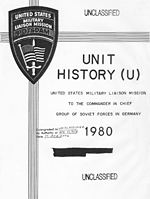 |
USMLM Unit History, 1980 - extract Vicinity Allstedt Soviet Airfield (PB730955), 051430Z JUN 80: A tour observing a flying program at Allstedt was flushed from its OP and detained after a short chase when the tour vehicle bottomed out on a tactical trail. Apparently the Soviets had mounted a very considerable operation to find and detain the tour: within a short time, no fewer than 29 Soviet troops were present in the area. While several of the detaining personnel were, as expected, Air Force, service affiliation of other members of the group remains unclear. Eight enlisted men, all armed with AK-74, wore dark blue field uniforms and dark blue berets. Wing-like devices were affixed to the berets; the tour officer reported that at least one of these individuals wore a blue and white shirt under the field uniform. In response to a direct question, a SR LT, wearing a green uniform with brown tabs, asserted that these individuals and himself were Navy personnel. In proof of his assertion, he displayed his own blue and white striped T-shirt. At 1745Z hours, a representative of the Leipzig Kommandatura arrived and escorted the tour to the Kommandatura, where they were released at 2230Z hours. The atmosphere throughout the detention was described as friendly and polite. |
notes
(1) The missions actually came about as a result of Article 2 of the "Agreement on Control Machinery in Germany"
(dated November 14, 1944).
That article reads as follows:
"Each Commander-in-Chief in his zone of occupation will have attached to him military, naval and air representatives of the other two
Commanders-in-Chief for liaison duties."
A footnote states:
"Treaties and Other International Acts Series 3070. Approved by the United States on January 24, 1945; the Soviet Union, February 6, 1945;
and the United Kingdom, December 5, 1944. This agreement was amended May 1, 1945 to provide for the participation of France."
(2) The vehicles of the Military Liaison Missions could travel anywhere in the GDR with the exception of the permanent and the temporary
restricted areas.
(3) An akt usually was prepared by the Komendatura representative on the scene or at the Komendatura
itself at the end of a detention - which
lasted usually a few hours. However, the mission commander always refused to sign the document. The Komendatura representative then would
make a notation in the document to that effect.
(4) The Western Military Liaison Missions came under fire several times during their existence. Major Arthur D. Nicholson, USMLM, was shot and
killed by a Soviet sentry on March 24, 1985 near Ludwigsluft.
(5) There were however some reprisals or intimidations. The most dramatic operation was an ambush by the Stasi - most likely with the approval of
the KGB - against a FMLM vehicle near Halle-Saale on 22 March 1984. Chief Warrant Officer Philippe Mariotti was killed there.
(6) Radio scanners were useful to elude Stasi surveillance teams. At least one USMLM reconnaissance tour officer used one to check weather
reconnaissance flights forecasts and to monitor airfield control tower communications.
(7) The ZIS-151 trucks still in service in the early 1980s were a development of the ZIS-150, itself based on the International Harvester KR-11
supplied by the USA during the war under the Lend-Lease program. The ZIS-151 (ZIL-151 from 1956) was intended to succeed the American
Studebaker US6 also delivered during the war. A ZIS-151 was indeed involved in the capture of a BRIXMIS team in Allstedt in 1979.
 |
Plan du site - Sitemap |  |
